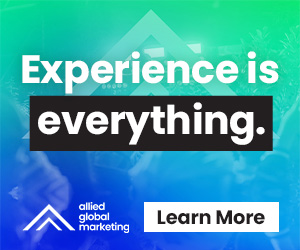 How can a brand get its message across to consumers if they spend the day constantly scrolling on their phones asks Andrew Murray?
How can a brand get its message across to consumers if they spend the day constantly scrolling on their phones asks Andrew Murray?

Studies have shown that the general public are scrolling for between eight and nine feet per day. This figure is even higher for Gen Z. And that’s just on mobile.
We have also heard that the fabled “millennials” have 8-second attention spans. And that this is reducing yearly. Scary.
You want to increase market share? You want to differentiate yourself from your competitors? You want to launch that exciting NPD? You want to engage a younger audience to ensure that your brand is “the brand for them”? You need to get your target’s attention.
In many ways, attention is the new currency. And it has been for a while. It’s started to become the next unit of measurement. Yes, we still measure engagement rates, impressions and more; but when it comes to social selling (even if a person doesn’t make a purchase, let’s say on an airline’s digital channels) you can still measure the attention the content received, relative to how much you’ve invested on the content piece they’ve consumed. There’s some ROI for you.
Video will be responsible for 79% of all consumer Internet traffic by 2018. So everyone says that you need video to grab attention. And yes it helps. Video will autoplay in your target’s feed on Facebook, Twitter, Instagram, and that movement should draw attention.
The only problem is that the videos you produce for your brand, and pay some of the online publishers to push (and even produce) for you, are competing for attention in people’s feeds alongside some of the world’s greatest content creators’ videos. The Jamie Olivers, the Vices, the Innocents, the Paddy Powers, the Patagonias, the Go Pros. And your video content is also competing with the Al Forans, the shopping haul videos from the many YouTube “stars” and the latest cat being scared by a cucumber video.
Let’s be honest, a lot of brand video content that’s produced is just not going to be able to compete. It can’t. It must be entertaining or provide utility for the person consuming the content.
It’s not one of those videos from the event that a brand has sponsored showing the atmosphere with “subtle” product/signage placement throughout. The only people that want to consume these videos are the editor from the video production company so that he/she can move onto something else interesting, and the brand manager so that he/she can show it at their quarterly or yearly review.
People don’t care about this type of video. A brand’s target doesn’t care. It’s not going to cut through when people are scrolling for 9 feet per day. However, if a media agency put enough money behind it, with autoplay on Facebook, it’ll get 10,000 – 20,000 views… that’ll be an average of 3-5 seconds in length. Most of these will not actually be views at all. The person was probably distracted by a fly in their froyo and they just stopped scrolling. Briefly.
But sure the video got 10,000 – 20,000 views so everyone’s happy and the spend on the video is justified. It just needs to stop.
Video can be powerful and grab attention if done well. And it doesn’t have to be high budget. It just needs to be right for your target audience. Does it entertain? Is it useful? Is it too brand/product heavy? Ask your agency and yourself a lot of these type of questions.
And there are lots of innovations in this space right now with Facebook Live, YouTube and Facebook 360 and VR videos, Instagram Stories and many more. It’s a case of choosing wisely and selecting the innovation that’s best suited to building your brand.
Speaking of building brand stories. Attention is fine, and sometimes attention is enough. For example, if you’re an FMCG brand and you’re trying to hit your target with an attention-grabbing hunger-inducing content piece on their commute home, in the hope they’ll stop and buy your product in a convenience store.
However, for many non-FMCG brands, you don’t wake up and decide to just go out and buy a car, or take out a mortgage overnight.
When building a brand story, it’s a case of creating deeper moments over a period of time for these brands across multi-channels and TTL. Good meal-size content can induce mass deeper moments. Bite-size content can be the attention-triggering or micro-moment content that keeps the brand in the target’s vision. It acts as the reminder.
So how can a brand cut through on social when people are scrolling for 9 feet per day? Simple. You need to master the attention economy. Yes. Easy.
Andrew Murray is director of social media and content at McCannBlue




















